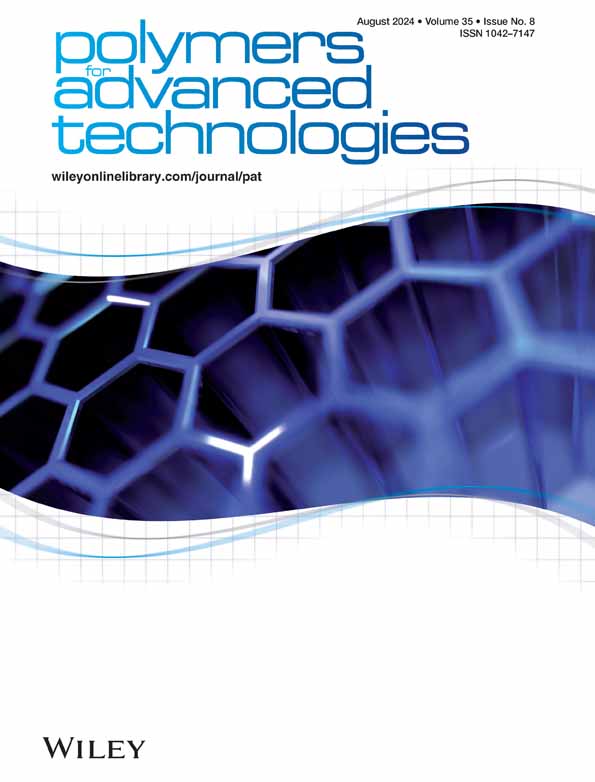Influence of ionic impurities on the dielectric properties of lignin
IF 3.4
4区 工程技术
Q2 POLYMER SCIENCE
引用次数: 0
Abstract
Lignin is one of the most common biopolymers. The application of the electrophysical properties of the polymer is one of the directions of its use. The effect of impurities potassium bromide with an ionic crystal lattice on the electrophysical properties of lignin has been shown. The study of the frequency dependences of the specific electrical conductivity and the components of the complex dielectric permittivity in the frequency range from 6 × 10离子杂质对木质素介电性能的影响
木质素是最常见的生物聚合物之一。应用该聚合物的电物理特性是其使用方向之一。研究表明,具有离子晶格的杂质溴化钾对木质素的电物理特性有影响。在 6 × 10-2 至 6 × 107 rad s-1 的频率范围内,对比电导率和复介电常数分量的频率依赖性进行了研究。结果表明,木质素-溴化钾系统的电物理特性具有非相加性。研究证实,木质素芳香环 π 电子的弛豫时间取决于混合物中溴化钾的含量,从 1.6 × 10-7 秒(100% 木质素)到 7.5 × 10-4 秒(混合物中 1%的溴化钾)不等。KBr 偶极子中钾原子的正电荷与木质素苯环的 π 电子的取向导致了高频弛豫时间的变化。这种效应可用于频率滤波器,以消除高频区域的电子极化。因此,离子杂质的极化对中高频交变电场区木质素的介电性能有显著影响。
本文章由计算机程序翻译,如有差异,请以英文原文为准。
求助全文
约1分钟内获得全文
求助全文
来源期刊

Polymers for Advanced Technologies
工程技术-高分子科学
CiteScore
6.20
自引率
5.90%
发文量
337
审稿时长
2.1 months
期刊介绍:
Polymers for Advanced Technologies is published in response to recent significant changes in the patterns of materials research and development. Worldwide attention has been focused on the critical importance of materials in the creation of new devices and systems. It is now recognized that materials are often the limiting factor in bringing a new technical concept to fruition and that polymers are often the materials of choice in these demanding applications. A significant portion of the polymer research ongoing in the world is directly or indirectly related to the solution of complex, interdisciplinary problems whose successful resolution is necessary for achievement of broad system objectives.
Polymers for Advanced Technologies is focused to the interest of scientists and engineers from academia and industry who are participating in these new areas of polymer research and development. It is the intent of this journal to impact the polymer related advanced technologies to meet the challenge of the twenty-first century.
Polymers for Advanced Technologies aims at encouraging innovation, invention, imagination and creativity by providing a broad interdisciplinary platform for the presentation of new research and development concepts, theories and results which reflect the changing image and pace of modern polymer science and technology.
Polymers for Advanced Technologies aims at becoming the central organ of the new multi-disciplinary polymer oriented materials science of the highest scientific standards. It will publish original research papers on finished studies; communications limited to five typewritten pages plus three illustrations, containing experimental details; review articles of up to 40 pages; letters to the editor and book reviews. Review articles will normally be published by invitation. The Editor-in-Chief welcomes suggestions for reviews.
 求助内容:
求助内容: 应助结果提醒方式:
应助结果提醒方式:


